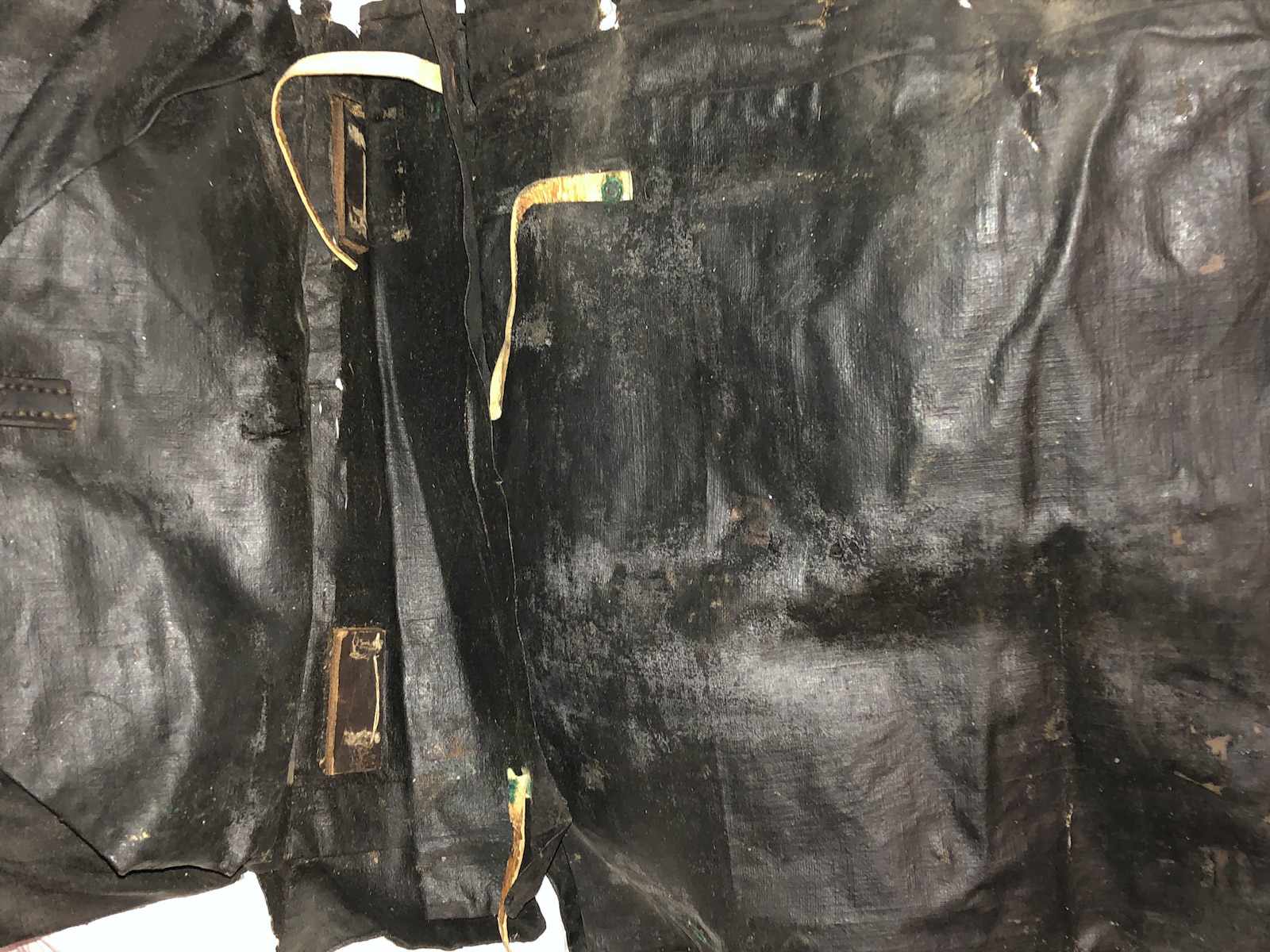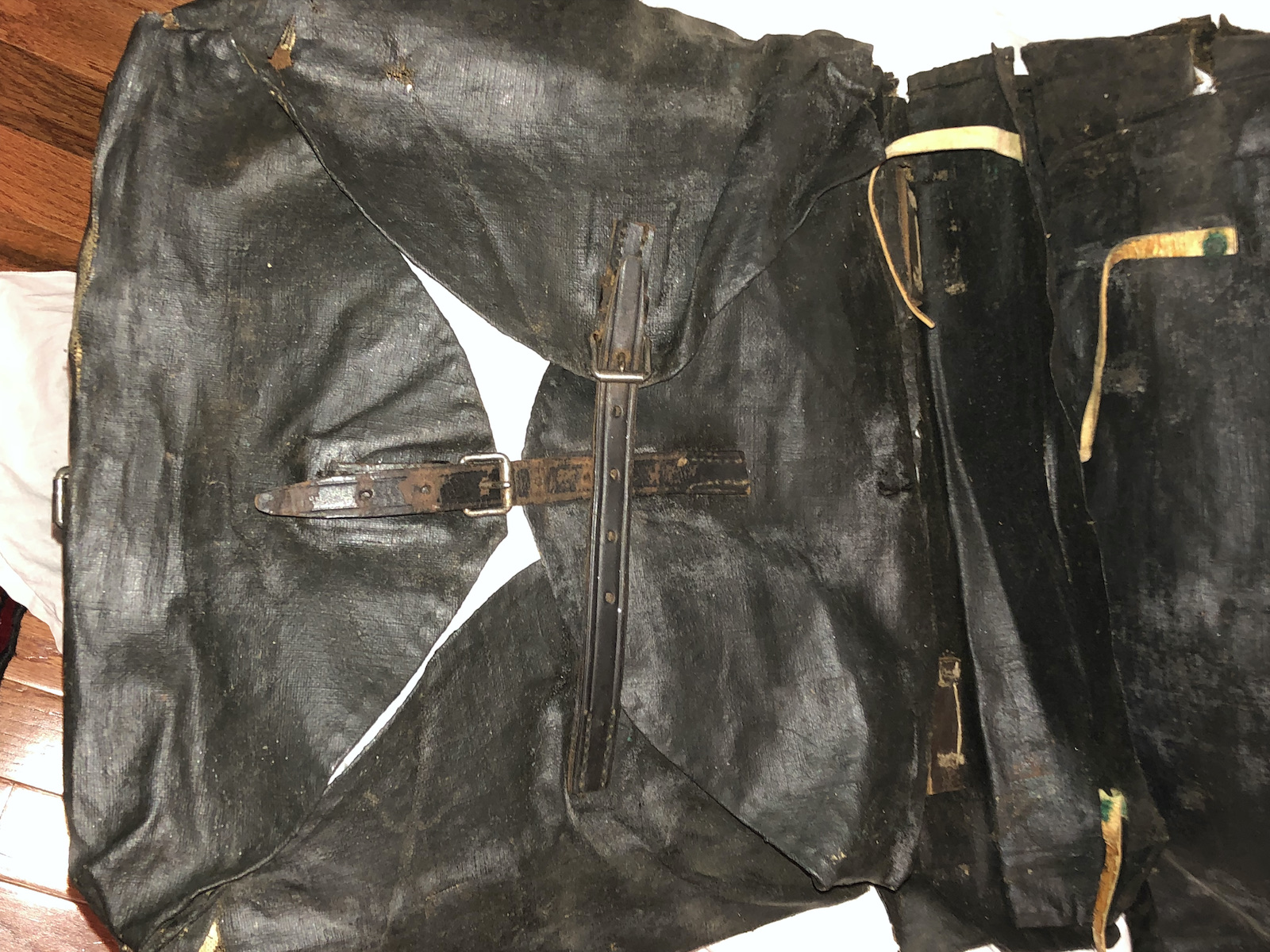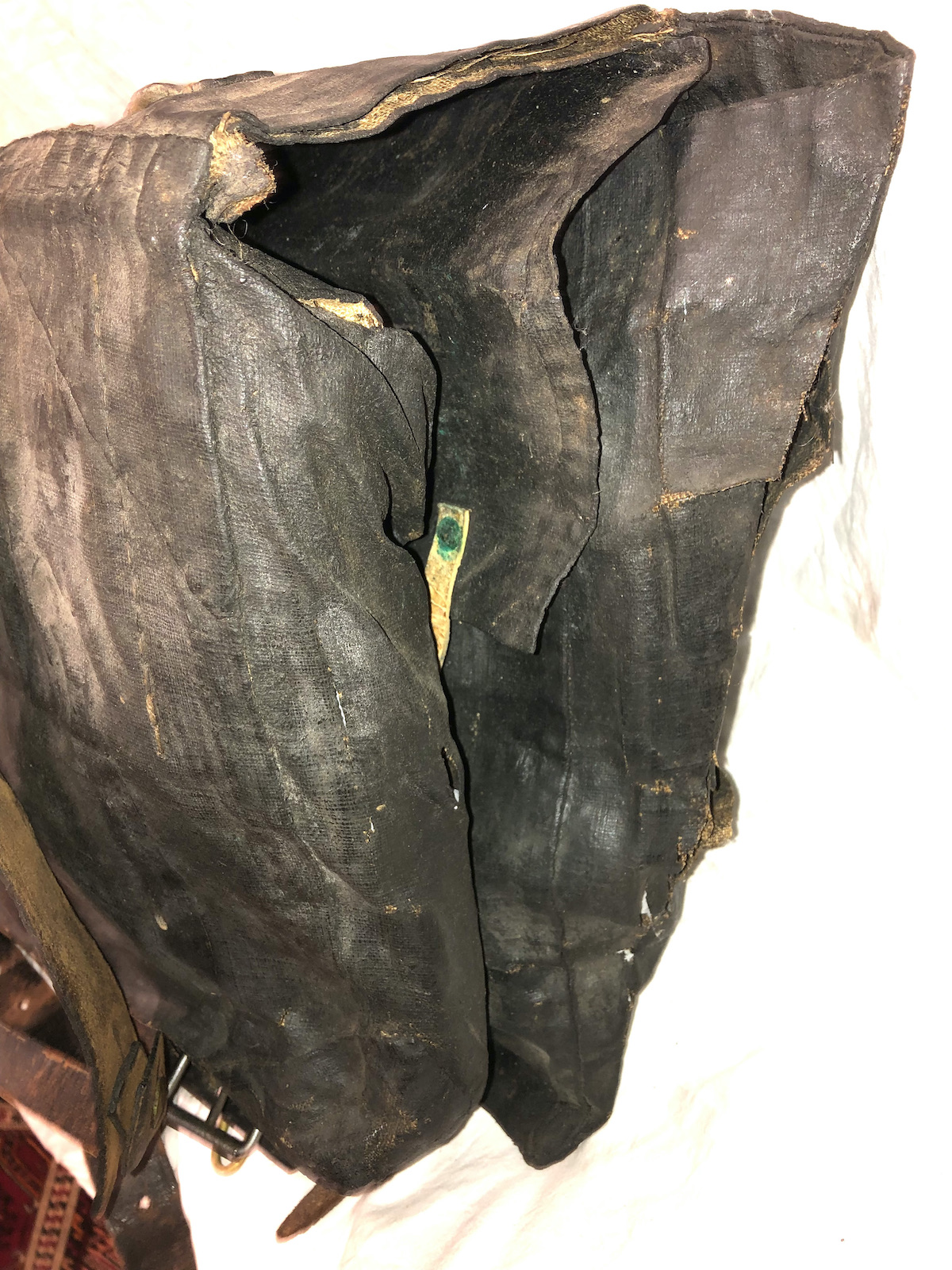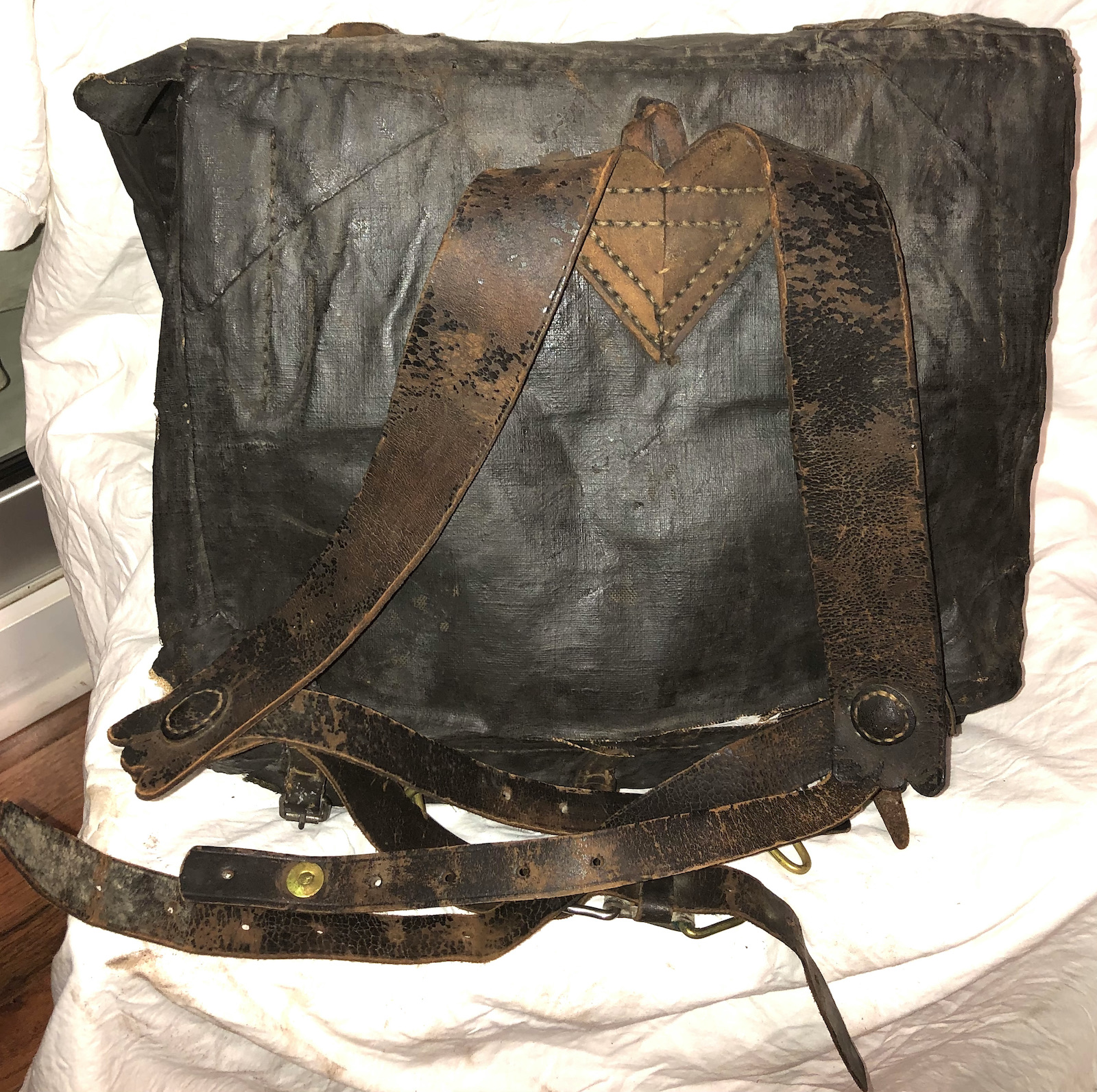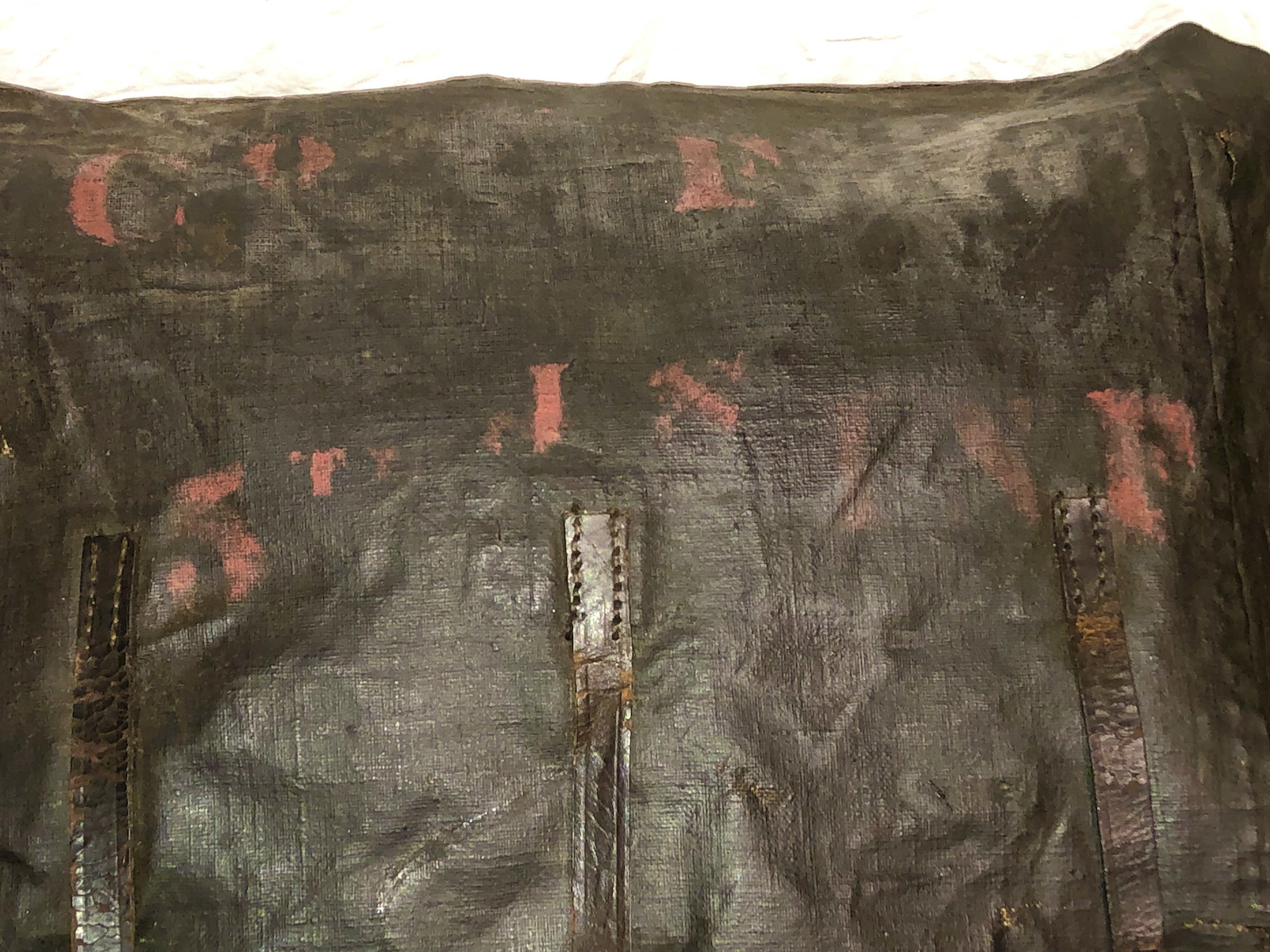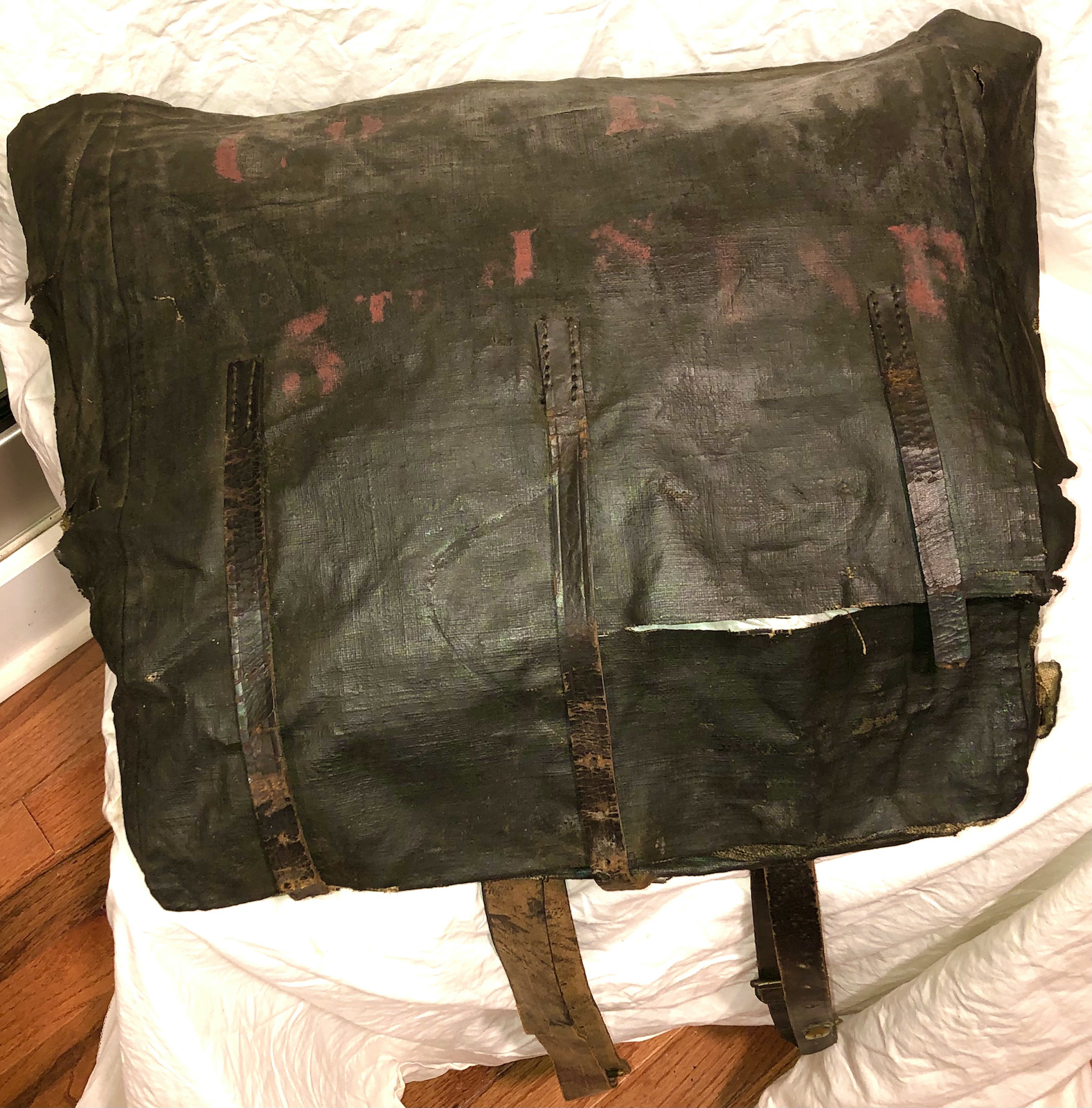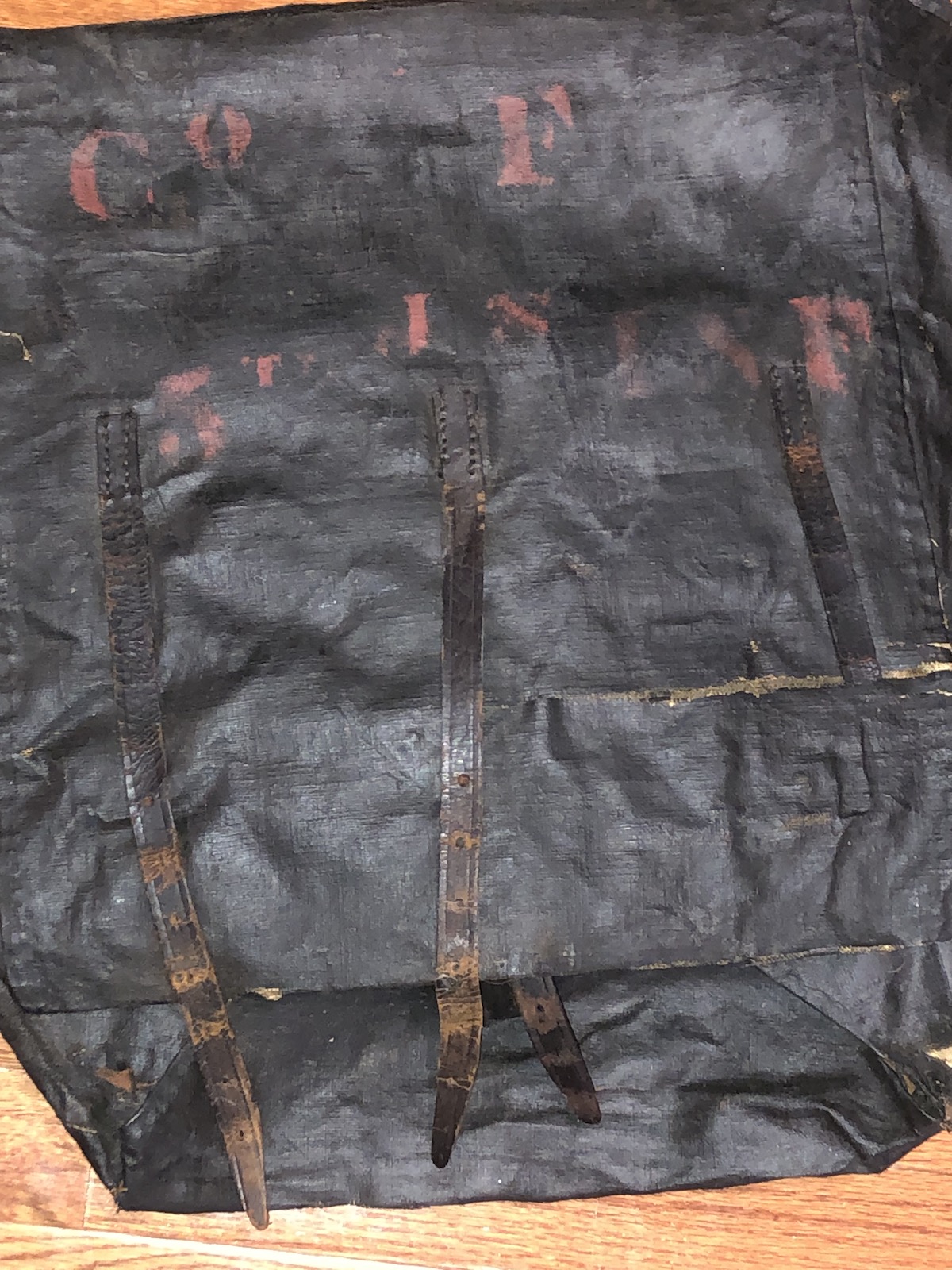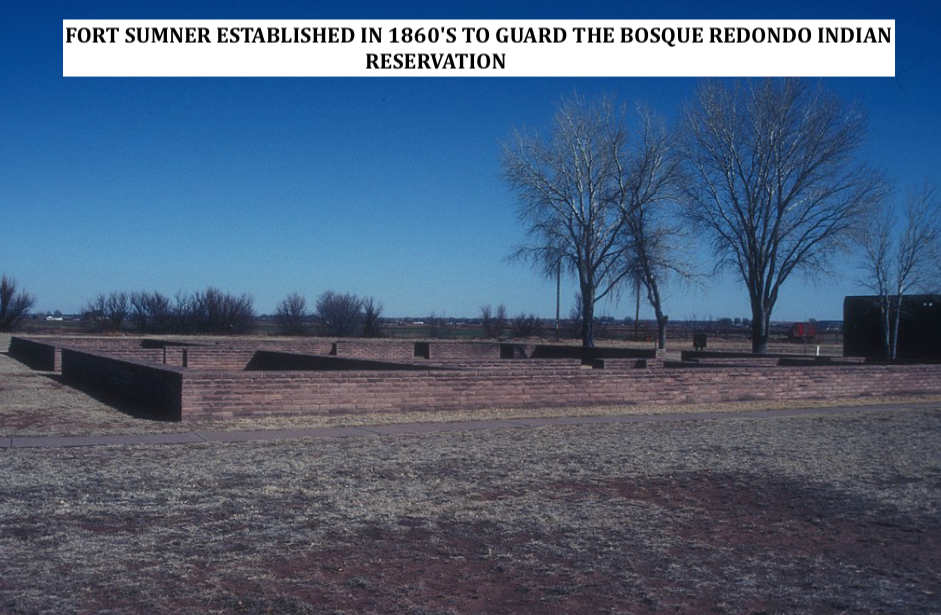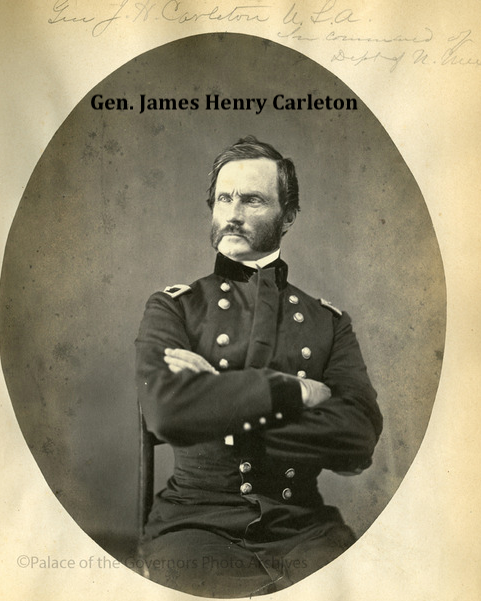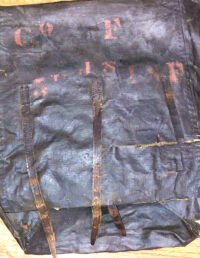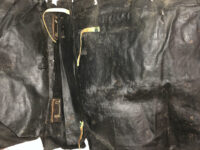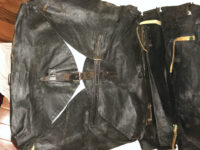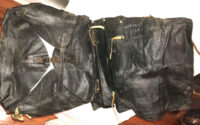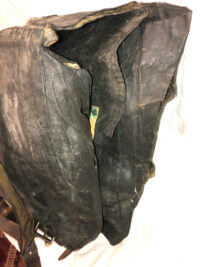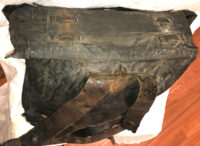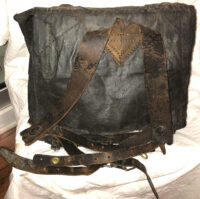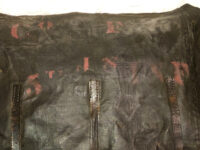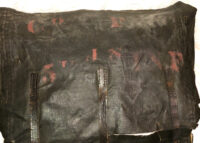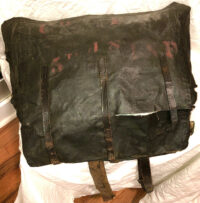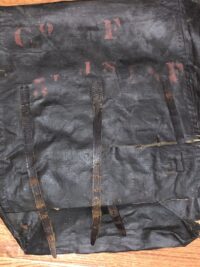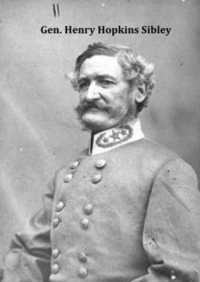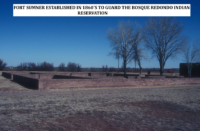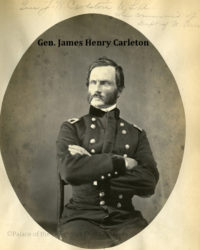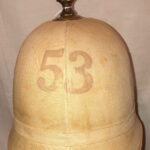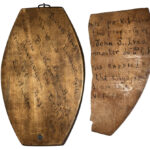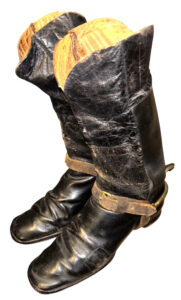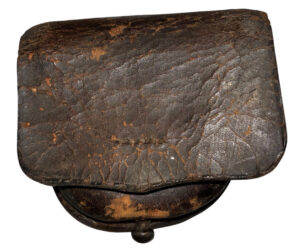Original Regimentally Painted, Civil War Knapsack – Co. F 5th U.S. Infantry
$550
Original Regimentally Painted, Civil War Knapsack – Co. F 5th U.S. Infantry – This Civil War issue, soft-pack, knapsack is an example of the typical knapsack issued to most U.S. infantrymen, during the Civil War. Uniquely though, this example has painted, in bright red, on one side of the exterior, the following:
“Co F
5th US INF”
This regimental designation is completely original to the Civil War period; we have only had one other, original, regimentally painted knapsack – original examples of these are quite rare. This example retains all of its original straps and various brass hooks, as well as all but one of the original rawhide ties on the inside flap cover. The black painted canvas body of the knapsack has the usual areas of stress tears, but generally, the knapsack, which we have stuffed with archival tissue paper, remains in very good, highly displayable condition. The 5th U.S. infantry had a rather unusual war period record – they spent virtually the entire war period in the Department of New Mexico, battling Indians. They participated in an expedition in Arizona, from December of 1864 until January of 1865, also to engage “hostiles”. The 5th U.S. Infantry, under Gen. James Henry Carleton, participated in several engagements against numerous native Americans, in the territories of New Mexico and Arizona, as well as tracking attempted incursions by Confederates under Gen. Henry Hopkins Sibley. This knapsack has a significant history.
5th Regiment, US Infantry (Regular Army)
OVERVIEW:
Duty in the Dept. of New Mexico throughout the war, operating against Indians. Battle of Valverde, N.M., February 21, 1862 (Cos. “B,” “D,” “F,” “I”). Evacuation of Albuquerque and Santa Fe March 2-4, 1862 (1 Co.). Action at Apache Canon March 28, 1862 (Cos. “A,” “G”). Peralta April 15. Companies “D,” “E,” “F” and “G” joined Gen. Carleton’s Command at Las Cruces August 10, 1862, Companies “A,” “B,” “I” and “K” at Fort Craig. Pecos River near Fort Sumner January 5, 1864 (Co. “D”). Expedition against Indians in Central Arizona December 26, 1864 – January 1, 1865.
Regiment lost during service 2 Officers and 18 Enlisted men killed and mortally wounded and 2 Officers and 35 Enlisted men by disease. Total 57.
Civil War service – General James Henry Carleton
In 1861 Carleton raised and was appointed colonel of the 1st California Volunteer Infantry Regiment. In October 1861, Col. Carleton replaced Brigadier Gen. George Wright as commander of the District of Southern California. In 1862 he commanded the so-called California Column during its advance across California, Arizona, New Mexico, and into Texas.
Carleton was promoted to brigadier general of volunteers on April 28, during the march from California to Arizona. Along the way the Californians fought the Battle of Picacho Pass and captured Tucson in Arizona. Then marched east engaging the Apache for the first time at the Battle of Apache Pass. As a result, he established Fort Bowie near Apache Pass to guard this critical place on the road between the Colorado and Rio Grande Rivers.
The advance force of the California Column reached the Rio Grande at abandoned Fort Thorn, New Mexico on July 4, finally linking up with Union forces under Gen. Edward R. S. Canby. Carleton’s troops were delayed two weeks by a huge flood of the river that year, eventually crossed at San Diego Crossing and with followed after the rearguard of Sibley‘s Confederate army through El Paso as far as Fort Davis, seizing control of southern New Mexico of most of West Texas.
After the Confederate threat to New Mexico seemed eliminated, Canby and many of the Union forces were sent to the east and in late August, Carleton was placed in command of the Department of New Mexico. Although a strict disciplinarian, he remained popular with his men.[7] Uncertain whether the Confederates would re-invade, Carleton took measures such as maintaining spies along the New Mexico–Texas border and retaining the services of volunteer units from Colorado which had played a prominent role in expelling the Confederates from New Mexico in winter and spring 1862. In fall 1862 Carleton also decreed several security measures including internal passports, curfews, and martial law.[8]
War Against the Mescalero Apache
While New Mexico department commander, Carleton concentrated on the threat posed by Apache and Navajo raiders. His first campaign was against the Mescalero Apache led by Mangas Coloradas. It was led by Christopher “Kit” Carson, leading New Mexican militia and California Volunteers. In October 1862, Carleton established Fort Sumner to house captured Mescalero Apache, despite warnings of its unsuitability for a large human presence.[8]
One notorious quote by Carleton on the Mescalero Apache:
All Indian men of that tribe are to be killed whenever and wherever you can find them. … If the Indians send in a flag of truce say to the bearer … that you have been sent to punish them for their treachery and their crimes. That you have no power to make peace, that you are there to kill them wherever you can find them.[9]
This policy was followed, even to those under a flag of truce. In January 1863, Mangus Coloradas agreed to meet with U.S. military leaders at Fort McLane, near present-day Hurley in southwestern New Mexico. Mangas Coloradas arrived under a white flag of truce to meet with Colonel Joseph Rodman West, an officer of the California Volunteers. Armed soldiers took him into custody, and West is reported to have ordered the sentries to execute the Apache leader. That night Mangas Coloradas was tortured with heated bayonets, shot and killed, as he was “trying to escape.” The following day, soldiers cut off his head, boiled it and sent the skull to the Smithsonian Institution. The mutilation of Coloradas’ body increased the hostility of the Apache toward the United States.
Navajo Campaign
Next Carleton concentrated on the Navajo. Against the “great evil” of Navajo raiders he began scorched earth tactics, stating they “must be whipped and fear us before they will cease killing and robbing the people.”[8] His campaign against the Navajos was relentless, with his primary field commander being Col. Carson. After the Navajo surrender at Canyon de Chelly, the entire nation was forced on the Long Walk to Fort Sumner. Carleton found “severity would be the most humane course” and felt expropriating the Navajo was in their best interests.[8] After the journey 2,000 Navajos remained unaccounted for, with official records stating 336 died along the way.[10]
Carleton used Fort Sumner, which already held many Mescalero Apaches, to house the Navajos, despite warnings of its unsuitability for such a large human presence.[8]
War with the Comanche and Kiowa
Carleton next sent Carson on an expedition to rid the southwest of raids by Comanche and their Kiowa allies, which resulted in the Battle of Adobe Walls.


